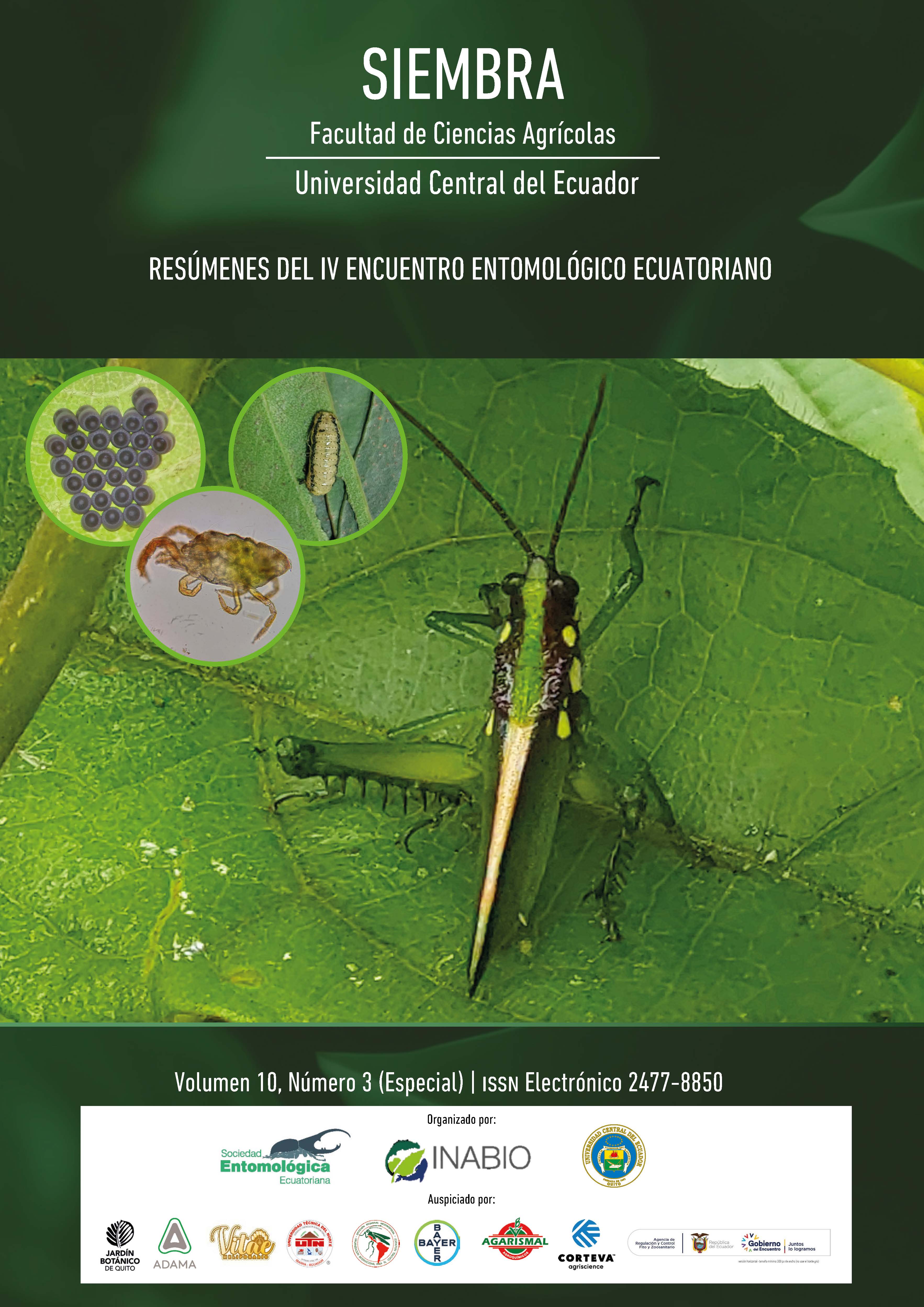ED015. First approach to the diversity of ants (Hymenoptera: Formicidae) in the Waorani ethnic reserve, Ecuadorian Amazon
Main Article Content
Abstract
The Ecuadorian Amazon is widely considered a biodiversity hotspot, the abundance of resources allows it to support a wide range of biological groups, some of which have been deeply studied, while others, such as ants, have barely been explore. Despite the recent increase in studies on the diversity of ants in the neotropical region, the Ecuadorian Amazon continues to have sites with large information gaps on the myrmecofauna. With this background, this work aims to deepen the understanding of the composition and structure of the ant community in one of the unexplored areas of the Ecuadorian Amazon, the Waorani Ethnic Reserve. Was applied the Ants of the Leaf Litter protocol at three sites along the tropical rain forest reserve, on the border of Orellana and Pastaza provinces (~250 m). We recorded a total of 1337 capture events, belonging to 141 species, 39 genera, and eight subfamilies of Formicidae. The Myrmicinae subfamily showed a clear dominance, representing more than 63 % of species, within this, the Pheidole genus stands out for its dominance. The community is made up of nine functional groups, the richest being the soil epigean omnivores, while the least specious were the Leafcutters. Note the presence of the introduced wandering ant Monomorium floricola, whose record is surprising, being in a site that is exceptionally isolated from human settlements. Our results invite increased efforts to study and conserve the ant fauna of one of the most biodiverse sites in the world.
Downloads
Metrics
Article Details

This work is licensed under a Creative Commons Attribution-NonCommercial 4.0 International License.
The authors who publish in Siembra know and accept the following conditions:
- Authors retain the copyright and grant Siembra the right of first publication of the work, under the Creative Commons Attribution License. Third parties are allowed to use what has been published as long as they refer to the author or authors of the work and its publication in this journal.
![]() This content is licensed under a Creative Commons Attribution-Noncommercial 4.0 International (CC BY-NC 4.0).
This content is licensed under a Creative Commons Attribution-Noncommercial 4.0 International (CC BY-NC 4.0).
- Authors maintain the copyright and guarantee Siembra the right to publish the manuscript through the channels it considers appropriate.
- Authors may establish on their own additional agreements for the non-exclusive distribution of the version of the work published in Siembra, acknowledging their initial publication in the same, such as in institutional repositories.
- Authors are authorized to disseminate their work electronically once the manuscript is accepted for publication.

